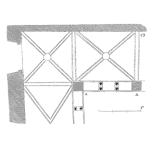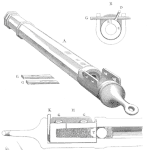
OSHA inspected 42 refineries between June 2007 – February 2009. Below is a summary of violations for 30 refineries. A bit of history.
[Read more…]Your Reliability Engineering Professional Development Site
Author of Operational Risk, Process Safety articles.
This author's archive lists contributions of articles and episodes.
by Sanjeev Saraf Leave a Comment

OSHA inspected 42 refineries between June 2007 – February 2009. Below is a summary of violations for 30 refineries. A bit of history.
[Read more…]by Sanjeev Saraf Leave a Comment

An existing equipment in a refinery may display flaws/damages that either existed during manufacturing or were induced during service. Let us briefly look at pre-service flaws and service-induced deterioration.
[Read more…]by Sanjeev Saraf Leave a Comment

During process development or plant operation it is often necessary to estimate energy of reaction based on chemical formulae representation alone. This heat of decomposition represents the potential energy that can be released and is therefore a measure of explosion potential. One can therefore envision that estimation of heats reaction based on chemical similarities should be possible similar to Benson’s group additivity for estimating heats of formation.
[Read more…]by Sanjeev Saraf Leave a Comment

Evaluation of reactive chemical hazards can range from simple paper-based calculations to highly complex testing and modeling. This post is aimed to help you formulate a systematic strategy for evaluating reactive chemical hazards in your facility. I will divide the various approaches in three tiers – simple to complex.
[Read more…]by Sanjeev Saraf Leave a Comment

Recently, members of Congress sent a letter to OSHA chief, Jordan Barab, to expand PSM standard to address reactive chemicals.
Reactive chemicals have gained increasing attention since the Chemical Safety Board (CSB) released its report on reactive chemicals in 2002. Now I have been working in the area of reactive chemicals since 1999 and let me assure you that one cannot say let us regulate chemical A because it is a reactive chemical.
[Read more…]by Sanjeev Saraf Leave a Comment

A process is described as inherently safer if it reduces or eliminates one or more process hazards and this reduction or elimination is accomplished through changes that are permanent and inseparable.Below are strategies for achieving inherent safety:
[Read more…]by Sanjeev Saraf Leave a Comment

In rare cases, lithium batteries can catch fire.
Lithium battery fires have resulted in recalls in the recent past – a few notable ones are indicated in the table below.
[Read more…]by Sanjeev Saraf Leave a Comment

We have been burning wood since days of the caveman. But did you know that wood can also explode?
Logs of wood will not explode but fine dust can lead to a fire and explosion. Let us see why.
[Read more…]by Sanjeev Saraf Leave a Comment

Methane being extremely flammable, the fire and gas detection (FGD) system in LNG facilities should be capable of early detection of flammable gas leading to shutdown/isolation and depressurization.
[Read more…]by Sanjeev Saraf Leave a Comment

Lithium batteries catch fire if the anode and cathode materials contact each other. What causes short-circuit leading to anode-cathode contact?
[Read more…]by Sanjeev Saraf Leave a Comment

Last year, the Government Accountability Office (GAO) reported that the Chemical Safety Board (CSB) is not meeting its statutory mandate by investigating major chemical accidents.
[Read more…]by Sanjeev Saraf Leave a Comment

On July 27, 2009 OSHA launched its National Emphasis Program (NEP) targeted at chemical facilities. The NEP will operate as a one-year pilot program during which OSHA will conduct planned inspections of chemical facilities.
[Read more…]by Sanjeev Saraf Leave a Comment

Years after 9/11 threat of terrorism continues to persist. Organizations buying insurance to provide protection from terror attacks is on the rise.
Prior to 9/11, there was terrorism insurance was not a major concern. However, after 9/11 insurance and reinsurance companies found themselves with significant amount of exposure. Immediately following 9/11, insurance companies were refusing to provide terrorism insurance or providing it at a very high premium to high risk facilities.
[Read more…]by Sanjeev Saraf Leave a Comment

It has been awhile since Ike…so I figured this would be an appropriate time to post on hurricane risks.
During a hurricane plant equipment can be damaged both by high winds and flooding. For example, the majority of plant equipment damage caused by Hurricane Rita (2005) was wind related, whereas more flood-related damage was reported during Hurricane Ike (2008).
[Read more…]by Sanjeev Saraf Leave a Comment

BLEVE stands for Boiling Liquid Expanding Vapor Explosion
If a tank containing liquid is subjected to external fire, the heat from the fire lead to boiling of the liquid. This in turn leads to increased pressure in the tank. This “boiling” liquid and “expanding” vapor may increase the pressure significantly and cause the tank to rupture. If the released liquid is flammable , it can catch on fire resulting in a fire and explosion.
[Read more…]